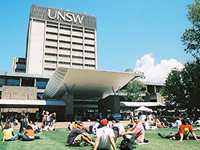|
||||||||||||||||||||||||||||||||||||||||||||||||||
| Popular Music: Histories, Grooves, and Texts - MUSC2117 | ||||||||||||||||||||||||||||||||||||||||||||||||||

Description Most of us have experienced those magic moments when sounds and rhythms (grooves) move the body and set in motion interactions between musicians, dancers and audiences. But what do musicians do with their bodies, voices and instruments to get other bodies toe-tapping, dancing, or moshing? How do musicians and listeners become one, a communion, or a rite? We begin to answer these questions with the understanding that musical sound is a powerful force for social interaction (grooves, in a broader sense). At the same time, we address these questions with the understanding that here is no simple relationship between what musicians produce and the social and cultural meanings ascribed to their productions. Popular music may also be considered as a cultural text that is read, received, and interpreted by both individuals and groups.
This course covers a wide variety of popular musics, ranging from the locally produced to the latest global trends, through a survey of the historical and social development of key genres, such as, blues, country, reggae, rock and roll, Motown, soul, hard rock, disco, hardcore, metal, grunge, techno, rap and Latin forms. These genres are also considered from both aesthetic and textual perspectives.
|
||||||||||||||||||||||||||||||||||||||||||||||||||


